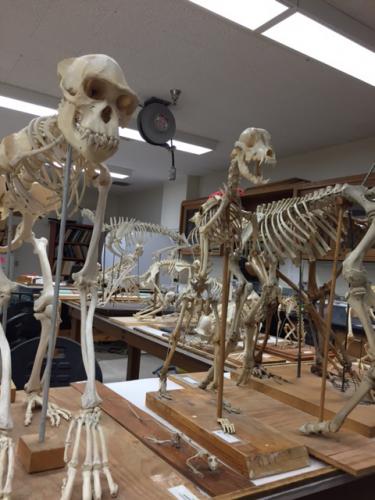
Established in 1984, the Maxwell Museum’s Documented Skeletal Collection has grown to include 308 individuals (as of 2018), including males and females, all ages, and many population groups. The skeletal remains are obtained through body donation, either by the individual before death or by the family of a deceased loved one. Information on the sex, age, population affinity, and cause of death is available for the majority of these individuals.
Since 1995, prospective donors or their families have been asked to provide health and occupational data. This information allows researchers to examine the skeletal manifestations of particular diseases including degenerative joint disease, lymphoma, and osteoporosis, as well as the reaction of bone to repetitive motions and trauma. Recent research has focused on understanding the effects of muscle use on the human skeleton and on how various cancers metastasize to bone.
If you are interested in donating your body to the Maxwell Museum’s Documented Skeletal Collection, you can find information about the process and answers to frequently asked questions on the Osteology Body Donation Program page.